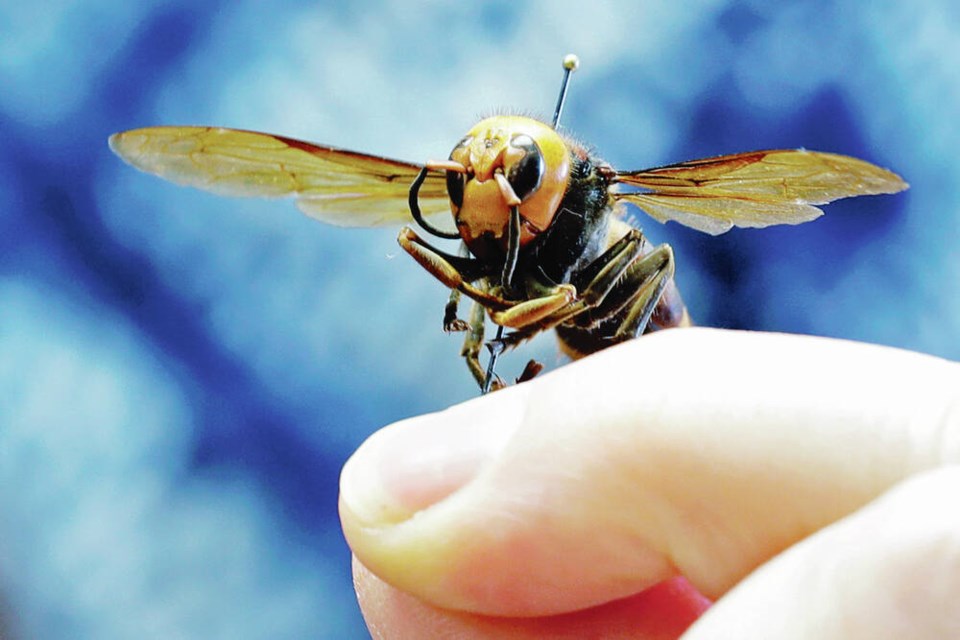The invasive Asian giant hornet — a.k.a. the “Murder Hornet” — first discovered on the Island in Nanaimo three years ago — is getting a less-ominous common name that doesn’t have ethnic associations. The Entomological Society of America announced this week the Vespa mandarinia species will now be known as the “northern giant hornet.”
The insect, native to Asia, was spotted in 2019 in Nanaimo and the underground hive at the base of a tree was quickly eradicated from a south-city park. But more hives have been discovered since in Washington state and several single specimens have been collected along the U.S.-British Columbia border using traps.
Scientists on both sides of the border have stepped up efforts ever since to eradicate the hornet because of its threat to native and honey bees.
Entomological Society of America president Jessica Ware said the new name is scientifically accurate, easy to understand, and avoids evoking fear or discrimination.
Last year, the society adopted new guidelines for insect common names that bar names referring to ethnic or racial groups and ones that “might stoke fear.”
The policies also discourage geographic references, particularly for invasive species. The society also launched an effort to review and replace insect common names that may be inappropriate or offensive.
Entomologist Chris Looney, part of the Washington State Department of Agriculture team researching and attempting to eradicate the hornet, authored the common-name proposal submitted to Entomological Society, citing the need for an accessible, accurate name.
The society said use of “Asian” in the name of a pest insect can “unintentionally bolster anti-Asian sentiment.
“And, from a taxonomic perspective, all hornets — 22 species of wasps in the genus Vespa — are native or common to Asia, meaning Asian giant hornet does not convey unique information about the biology or behaviour of the species Vespa mandarinia,” the group said in a statement.
Hive discoveries since the Nanaimo find have been limited to a single county in Washington, but officials believe the northern giant hornet could likely find suitable habitat in much of the 91原创 Northwest and beyond if allowed to disperse.
Increasing its territory would pose a significant threat to native bees and honey bees, which the Entomological Society said lack natural defences against the hornet.
How the hornets arrived in North America remains under investigation. DNA analysis shows hornets on each side of the U.S.-Canada border likely did not come from the same location in Asia, suggesting the possibility of more than one introduction.
>>> To comment on this article, write a letter to the editor: [email protected]



